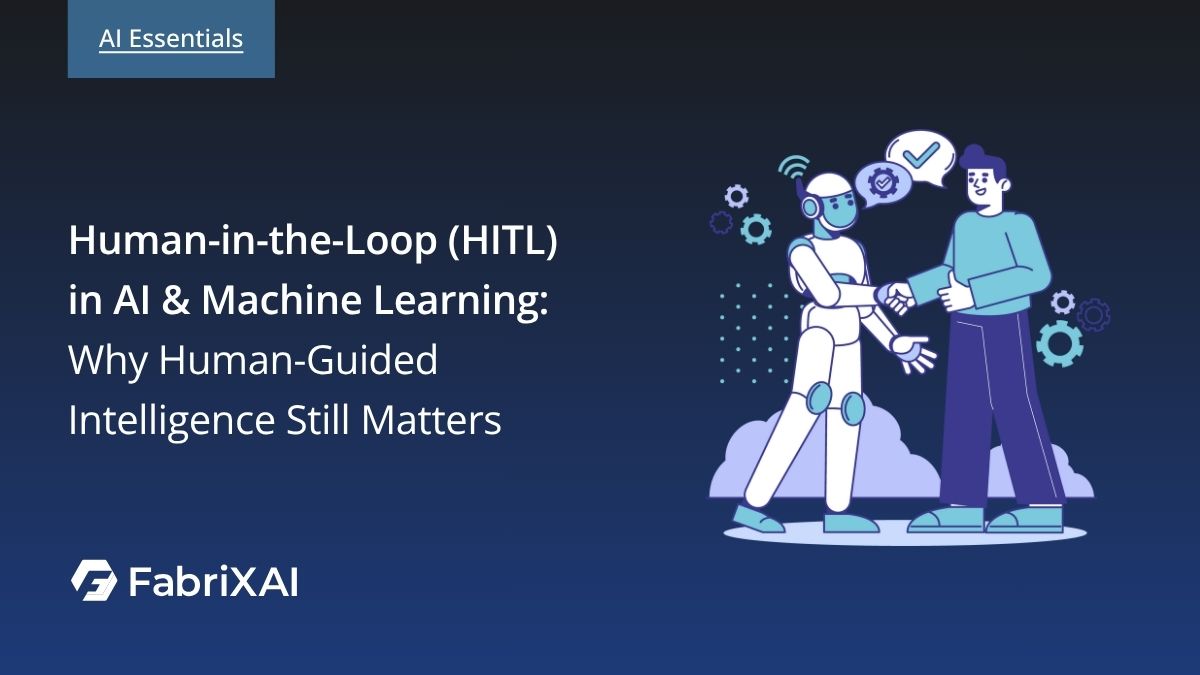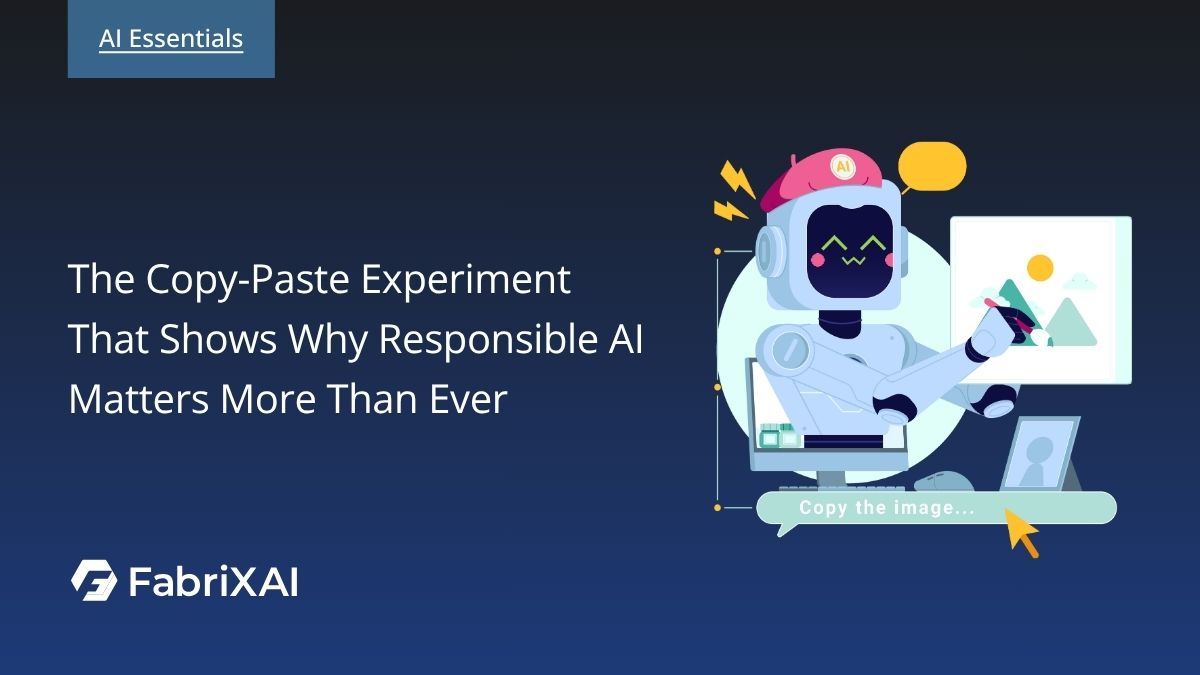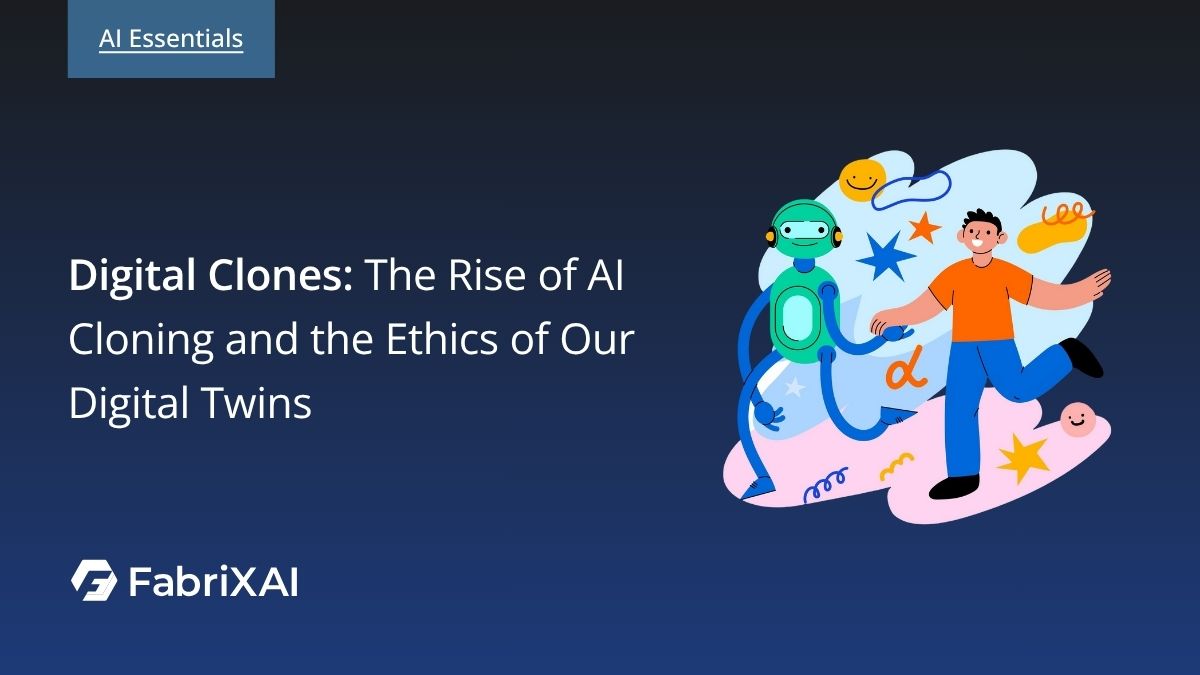Human-in-the-Loop (HITL) in AI & Machine Learning: Why Human-Guided Intelligence Still Matters

As AI becomes woven into the fabric of everyday life, the conversation is no longer just about what machines can do. It is about how they collaborate with us and how we shape the intelligence that shapes our world. At FabriXAI, we believe the most powerful systems are not purely autonomous or purely human. They are hybrid systems that combine the speed of machines with the insight of people.
This is the essence of Human-in-the-Loop (HITL). It is more than a technical method. It is a philosophy that says true intelligence comes from partnership. Humans and machines learn better together than either could alone.
What is Human-in-the-Loop (HITL)?
Human-in-the-Loop (HITL) is an approach to artificial intelligence and machine learning that keeps humans actively involved at important points in the AI lifecycle. Instead of letting AI run entirely on its own, HITL places humans wherever accuracy, context or ethics matter most.
To understand HITL, imagine teaching a child. You do not simply hand them a book and walk away. You guide them, correct them and help them understand subtle meanings. AI models learn in a similar way. They can recognize patterns incredibly fast, but they do not naturally understand intent, culture or consequences. Humans fill that gap.
HITL works because humans and machines are good at different things:
- AI excels at scanning huge amounts of data, spotting patterns and making predictions quickly.
- Humans excel at common sense, cultural understanding, real world context, critical thinking and moral judgment.
Together, they form a complete learning system.
Below is where HITL typically appears in the AI workflow.
1. Training and Data Preparation
AI needs examples to learn from. Humans create, label and refine these examples. This can include:
- describing objects in images
- marking important phrases in text
- identifying unusual data points
- verifying audio transcriptions
This human created foundation is essential because if the training data is wrong or inconsistent, the entire model will inherit those mistakes.
2. Model Evaluation and Error Correction
Before an AI system is used in the real world, humans review its predictions. They look for:
- mistakes the model cannot detect
- misunderstandings caused by cultural or language differences
- harmful or biased patterns that emerge from the data
This is similar to quality control in manufacturing. Humans make sure the product is safe and reliable before release.
3. Decision Support During Deployment
When AI is deployed, it often assists humans rather than replacing them. For example:
- A medical AI points out areas of interest on an X ray, but a doctor makes the final call.
- A financial AI flags suspicious transactions, but an analyst decides whether action is needed.
This makes the system safer and ensures that human responsibility remains central.\
4. Active Learning and Continuous Improvement
As the AI encounters new or confusing situations, it can ask humans for help. This is known as active learning.
Humans provide the correct interpretation, and the AI uses this to improve. Over time, the model becomes more accurate because it continuously learns from real world corrections.
5. Ethical and Safety Supervision
Some AI tasks involve sensitive or high risk content. Humans review:
- hate speech or harmful materials
- deepfake detection
- fairness checks
- decisions that affect vulnerable groups
In these cases, human oversight ensures the AI behaves responsibly and does not inadvertently cause harm.
In summary, HITL views humans not as emergency backups but as essential partners. AI becomes more trustworthy, adaptive and aligned with human values when humans remain part of the learning loop.
Why Human-in-the-Loop (HITL) Matters in Modern AI
As AI expands into healthcare, finance, cybersecurity, education and everyday consumer experiences, the consequences of mistakes become more serious. HITL provides important advantages:
1. Machines Scale, Humans Interpret
AI can process thousands of documents, images or conversations in seconds. But only humans can interpret subtle meaning such as tone, sarcasm, sensitive context or exceptions that break the rules.
2. Bias Must Be Watched Carefully
AI learns from historical data. If the data contains bias, the AI will repeat or even amplify it. Humans act as fairness judges who catch problems before they turn into real world harm.
3. Trust Requires Human Presence
People want assurance that a human is still involved in decisions that affect their lives. HITL helps build confidence and accountability.
4. Real World Conditions Change Constantly
The world shifts every day. What was true last year might not be true today. Human feedback keeps AI up to date so it does not drift away from real world reality.
How Human-in-the-Loop (HITL) Works
1. High Quality Data Labeling
Humans annotate text, audio and images so AI can understand what it is learning. This is the foundation of any successful AI model.
2. Human Validation of Model Outputs
Humans review AI predictions and create improvement loops. This helps the model learn from its mistakes.
3. Active Learning Feedback
When the model is unsure, it asks for human help. This ensures that human effort is used efficiently, only where the model needs it most.
4. Continuous Monitoring and Refinement
The relationship between humans and AI does not end after deployment. Humans continue to monitor performance and correct drift.
5. Applications Across Industries
HITL is essential for building safe and reliable systems in many fields:
- Medical diagnostics
- Fraud detection and cybersecurity
- Content safety and moderation
- Autonomous vehicles
- Conversational AI and language models
- Personalized digital experiences
Whenever the stakes are high or the data is complex, HITL becomes a major advantage.
Real Life Examples of Human-in-the-Loop (HITL)
HITL can sound abstract until you see it in everyday situations. Here are some concrete examples of how humans and AI already work together in the real world.
1. Email Spam Filters
Most people use email filters without thinking about it. Your inbox automatically separates normal messages from spam.
- The AI looks for patterns in the email content, sender and links.
- When you click "Report spam" or "Not spam", you are acting as the human-in-the-loop.
Your feedback teaches the system what you consider unwanted or important. Over time, the spam filter becomes more accurate because millions of users are constantly correcting it.
2. Content Moderation on Social Platforms
Social media and online communities rely heavily on HITL to keep users safe.
- AI scans posts, images and videos for harmful content such as hate speech, graphic violence or scams.
- When the AI is not sure, it flags the content for a human moderator.
- Human reviewers then decide if the content should stay, be removed or be escalated.
Here, AI handles the volume, but humans make the sensitive judgment calls.
3. Medical Imaging and Diagnosis Support
In hospitals and clinics, AI is increasingly used to help doctors interpret medical images such as X rays, MRIs and CT scans.
- The AI highlights regions that look unusual or similar to known patterns of disease.
- A doctor then reviews the images and the AI suggestions, and makes the final diagnosis.
The human-in-the-loop is critical here because health decisions are high risk and must account for the full context of the patient, not just the image.
These examples show that HITL is not just a research concept. It is already part of the tools we use every day, quietly combining the strengths of humans and machines.
Challenges of Human-in-the-Loop (HITL) and Why They Are Worth Solving
HITL is powerful but comes with challenges that organizations must address:
- Additional cost and operational complexity
- Slower response compared to fully automated systems
- Annotator fatigue or inconsistency
- Ethical concerns when reviewing sensitive content
- The need for intuitive interfaces that support efficient human reviews
However, these challenges are outweighed by the benefits. The result is AI that is safer, smarter and more aligned with human expectations.
The Future of Human-in-the-Loop (HITL): Human Machine Synergy
At FabriXAI, we imagine a future where HITL evolves into fluent collaboration between humans and machines. Key directions include:
- Hybrid Intelligence Systems: Humans and AI share tasks based on strengths instead of limitations.
- Explainable AI Combined with Human Oversight: Transparency becomes standard, allowing humans to guide AI behavior more effectively.
- Adaptive and Real Time HITL: Micro feedback from human operators continually tunes model performance.
- Smarter Digital Twins and Personalized AI Systems: HITL ensures these systems reflect authentic human values rather than algorithmic assumptions.
This future is not about replacing humans. It is about enhancing what humans can do.
Key Takeaways
- Human-in-the-Loop (HITL) integrates human judgment into AI and machine learning processes at key decision points.
- HITL improves accuracy, trust, fairness and long term adaptability.
- It is essential in sectors where ambiguity, ethics or safety matter.
- Designing HITL requires thoughtful balancing of cost, UX and human well being.
- The future of AI is not full automation, it is the partnership of humans and machines.
Frequently Asked Questions
1. Does Human-in-the-Loop (HITL) slow down AI systems?
Yes, human involvement can introduce delays. However, in high risk scenarios, accuracy and safety are far more critical than speed.
2. Is Human-in-the-Loop (HITL)only for advanced or complex AI?
No. Even basic AI workflows can benefit from human oversight whenever quality and trust are priorities.
3. Can Human-in-the-Loop (HITL) eliminate bias in machine learning?
It cannot remove bias completely, but it significantly reduces it by introducing human judgment throughout the learning process.
4. How does Human-in-the-Loop (HITL) help with model drift?
Human reviewers can quickly identify changes in real world data and provide updated guidance that keeps the model relevant.
5. Will Human-in-the-Loop (HITL) still matter as AI becomes more autonomous?
Yes. The more powerful AI becomes, the more important human oversight will be to ensure alignment with human values and ethical standards.



